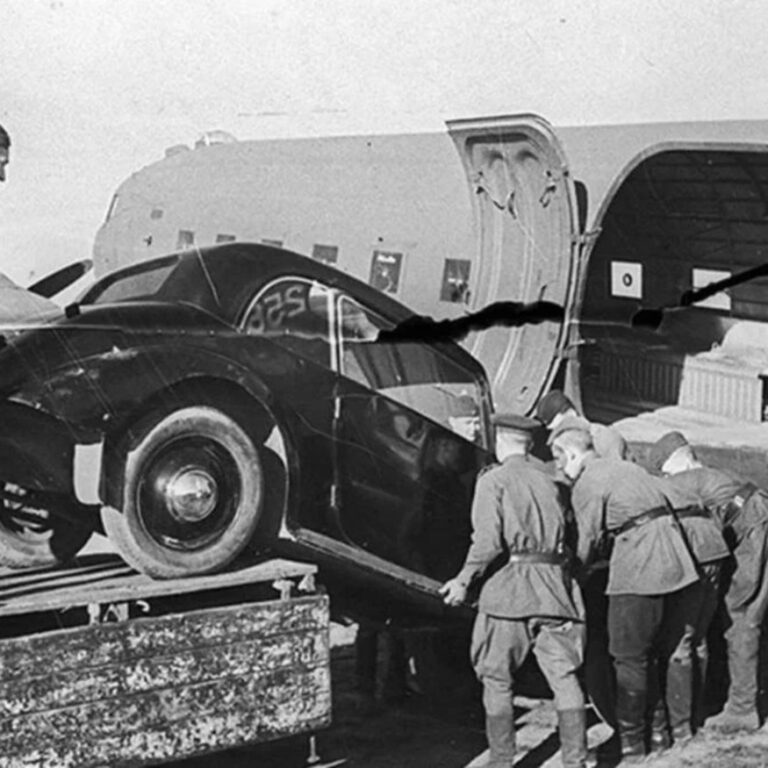
Looting accompanies every war. However, the crimes of Russian soldiers stand out among the armed conflicts of the last decades for their impudence and greed.
EDITORS’ NOTE
This story is a part of the partner project between Ukraїner and Local History.Their marauding tradition can be traced back to the fact that the Russian army is a direct descendant of the Soviet army. The Soviet military was based on the idea that looting was acceptable. This tradition has become apparent repeatedly during the Soviet and Russian wars.
The Bolsheviks as a starting point of looting tradition
Before the Revolution of 1917, the Russian imperial army did not exceed the looting limits conventional for its time. However, after the seizure of power, the Bolsheviks started building a completely new army meant to spread the communist revolutionary idea across the world. At the same time, the Leninist party began an unprecedented expropriation of private and state assets under the “Loot the looters!” motto. These seized funds were used to support the regime, subsidise the “world revolution”, and purchase weapons.
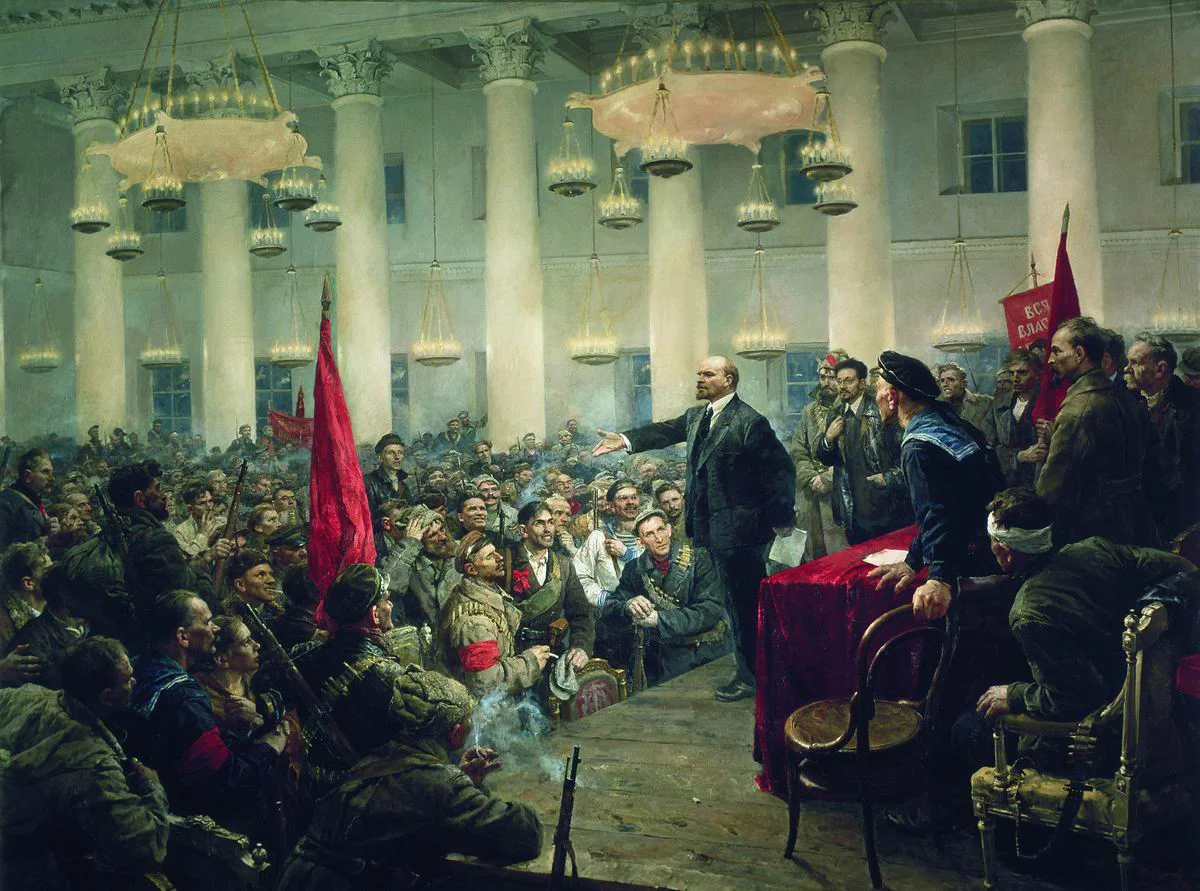
A painting by Vladimir Sierov
The “Loot the looters!” call was first made on 16 January 1918 at the III Congress of Soviets. The statement came from Don Cossack Shamov. Later, this phrase was quoted several times by Lenin. Notably, on 29 April 1918, Vladimir Ilyich said: “I cannot find what is wrong with “Loot the looters” motto when we talk in terms of history. If we use the expression “expropriation of expropriators,” why can’t we go without Latin words?”.
English historian Sean McMeekin noted that the Bolsheviks interpreted the idea of property in a distorted and ideological way and understood the law and morality in a completely different way. “Bolsheviks, like Proudhon, believed that private property is a theft. Lenin argued that his government was merely looting the looters because the aristocracy, industrialists, merchants, and bureaucrats had stolen the wealth from the proletariat and were now being returned. I do not think that all the Bolsheviks believed this rhetoric. Still, it was fair enough to be used for justifying their actions,” McMeekin explained.
The Red Army became an instrument of massive loot. The public call to “Loot!” brought the representatives of the social bottom, who often had some criminal past, to the ranks of the Bolsheviks. Many volunteers joined the “Reds” not because of revolutionary ideas but to get weapons and be able to loot.
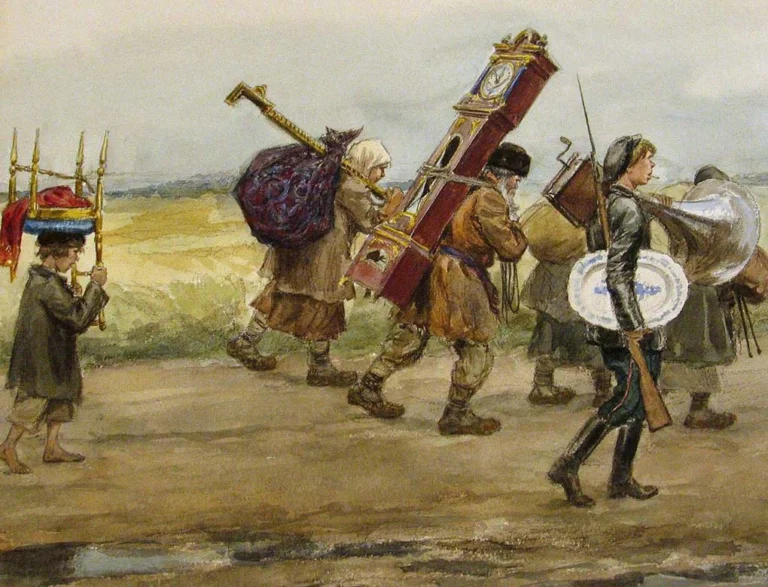
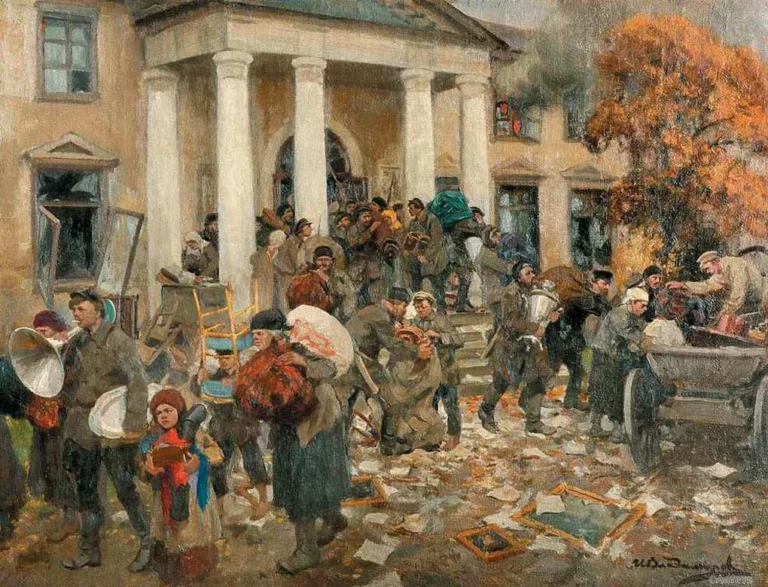
slideshow
Looting as a deliberate tactic
In December 1918, the Bolshevik troops invaded the Ukrainian People’s Republic territory. The commander of the Kyiv offensive, Mikhail Muravyov, inspired the soldiers with calls to deal with the “enemies of the revolution” and promises to hand Kyiv over to his subordinates for looting.
When the “Reds” entered Kyiv, they brought the promises to life. The Bolsheviks staged a massacre in the city and began to loot it.
Some of the Bolshevik leaders did not tolerate such behaviour. In the spring of 1918, Muravyov was arrested. The head of the Cheka (The All-Russian Extraordinary Commission for Combating Counter-Revolution and Sabotage) Felix Dzerzhinsky testified,
“Our worst enemy could not have caused us as much harm as was done with the terrible massacres, executions, tyranny, by giving soldiers the right to loot cities and villages. All this was done on behalf of our Soviet government, turning the entire population against us. Looting and violence were deliberate tactics which, while giving us fleeting success, resulted in defeat and disgrace.”
At the same time, other Bolsheviks came to Muravyov’s defence, for example, Vladimir Antonov-Ovseenko and Nikolay Muralov. They did not perceive his actions as a crime and disagreed that looting seemed to cause harm. In June, Muravyov was acquitted and sent to command the Eastern Front. There, he organised a rebellion against the Bolsheviks and died during the suppression of the riots.
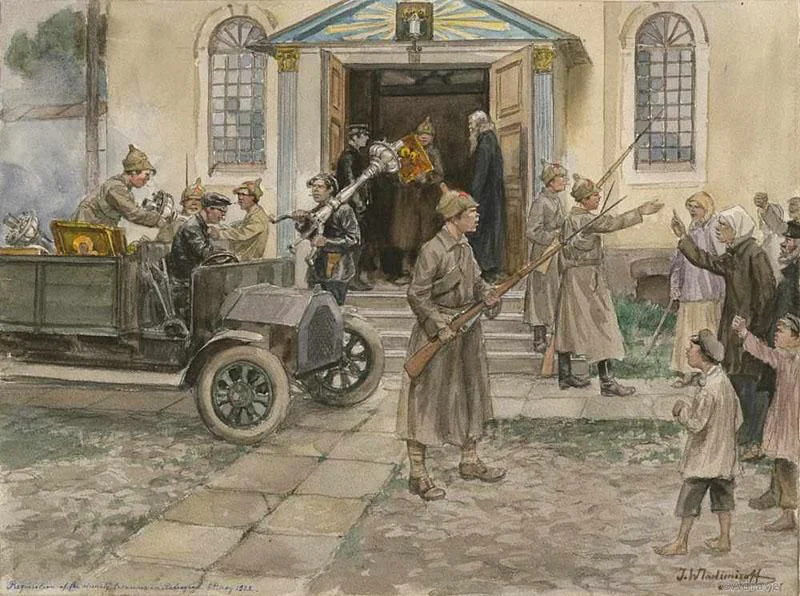
A painting by Ivan Vladimirov depicting mass looting by Bolsheviki regime.
The Russian Civil War, with its classism, the official motto “Loot the looters!”, chaos, the absence of central control, and social elevators for random people lacking moral values, contributed to an extraordinary looting trend within the Red Army.
Mass looting, disguised as “expropriation,” continued until the war ended. By December 1921, the Bolsheviks had sold $1.2 billion worth of jewellery to the West (about $120 billion in today’s economy). At the same time, numerous valuables settled in the pockets of commanders and ordinary Red Army soldiers.
“This is the suit I would be wearing at the university graduation”
Looting was one of the most common war crimes committed by the Red Army in World War II, alongside rape. When Soviet soldiers entered Europe, they were amazed at the level of prosperity they saw. European elegance contrasted with grey Soviet everyday life and the low standard of living in the USSR.
Red Army soldiers came from the territories devastated by the war. Many did not have their own homes anymore. They lived one day at a time, burning with revenge, led by feelings of impunity and permissiveness. In addition, they were frequently of poor education and culture. The command partly encouraged looting and tried to support the soldiers’ morale with such “rewards”.
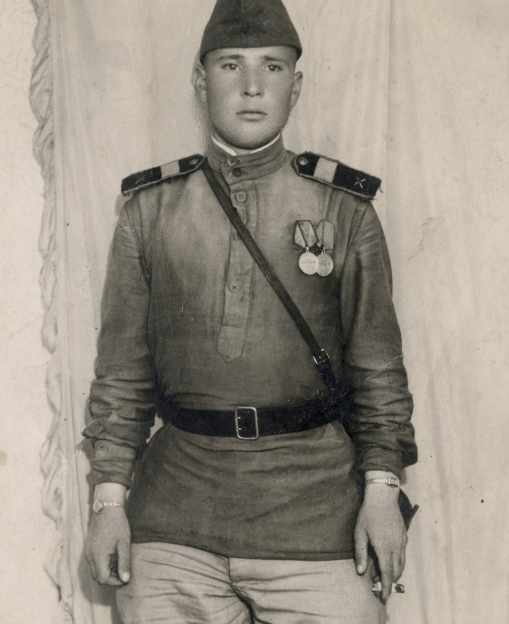
A Red Army soldier with two German women's watches on each hand
Soviet signalman Viktor Zalhaller recalled: “They took Deutsch Eylau. The city with the famous name turned out to be small. They were untouched by the war quarters. There were no people. I entered the department store and knew the owner’s apartment was upstairs. I took the suit from the back of the bed and sent it home. This is the suit I would later be wearing at the university graduation. A car with signal girls stopped under the window. I opened the closet, grabbed the dresses, and threw them into the car. One dress was sent home.”
A watch was one of the most coveted trophies for a Soviet soldier. The Red Army men were not knowledgeable about watches, so they often wore women’s ones. In many war photos, you can see a watch on both hands.
Artilleryman Isaak Kobylianskyi recalled: “I noticed that on my left flank … some guys were collecting “trophy” watches. I thought about my own interest and said [to the captured Germans]: ‘And now I ask you to give the Soviet officer a good watch as a souvenir.’ There was a pause; for some reason, the Germans consulted with the ‘parliamentarian’ in a whisper, but no one gave a watch. I had to ask about the reason. As it turned out, they were confused by the demand to give specifically a good watch, not a watch itself. I told them to give me any, and in an instant, my Gimnasterka (army shirt — tr.) breast pockets were filled with various watches.”
Zhukov took out seven carloads of furniture
Soviet soldiers and officers were allowed to send parcels with “trophies” home. Generals and marshals sent entire echelons of stolen property to the USSR.
It is known that Marshal Georgy Zhukov, one of the symbols of the Soviet victory, filled seven carriages with the most expensive German furniture. He sent home sets of furniture for the living room, dining room, bedrooms of his city apartment, and the summer house — a total of 194 items.
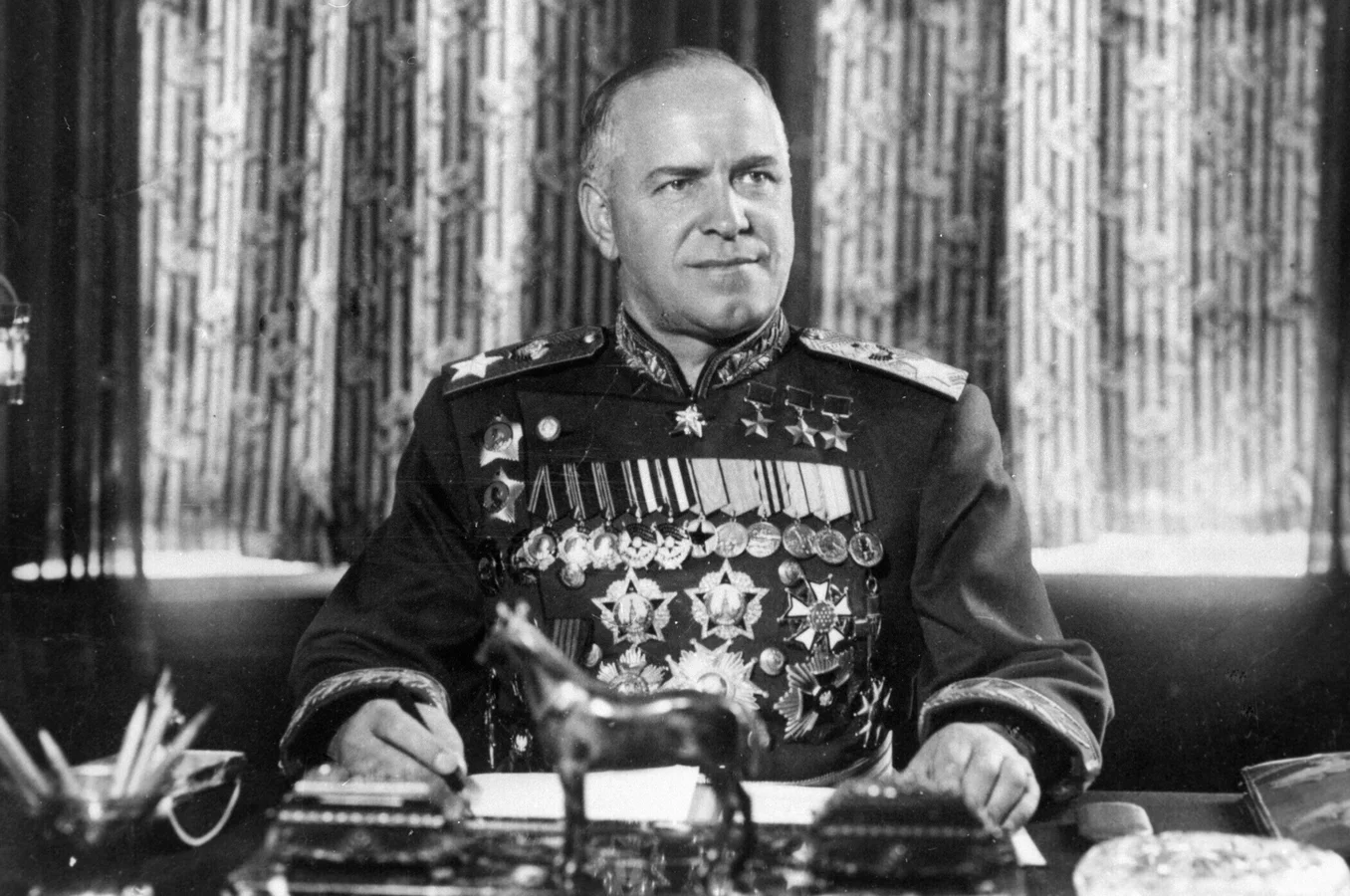
Soviet Marshal Georgy Zhukov did not speak German. Nevertheless, he took many rare books out of Germany, which were just sitting at his dacha.
In January 1948, the “trophy case” investigation began on Stalin’s order. Zhukov was searched and the list of items found includes “more than 4,000 meters of silk, brocade, velvet and other fabrics; 323 sable, monkey, fox, cat and astrakhan skins; 44 ancient carpets and large tapestries, exported from Potsdam and other German palaces; 55 valuable classical paintings in artistic frames, 7 large boxes with porcelain and crystal dishes; 2 boxes with silver dinnerware and tea sets,” as reported by the Minister of State Security of the USSR Viktor Abakumov.
Abakumov was impressed with Zhukov’s summer house: “In all rooms of the summer house, on windows, shelves, tables and bedside tables, there are many bronze and porcelain vases, statuettes, as well as various ornaments of foreign origin. The entire interior is foreign, mainly German, starting with furniture, carpets, dishes, and decorations and ending with window curtains. In the summer house, there is literally not a single thing of Soviet origin except for the doormats that lie at the entrance to the house. There is not a single Soviet book there, but there are many volumes in the cabinets, beautiful bindings with gold embossing, all in German.”
The US Naval Attaché under the Chiang Kai-shek government recalled meeting Soviet soldiers in Manchuria: “Russian soldiers broke into houses and took everything except furniture. Then, a military truck would drive up and take away the furniture. Soviet officers usually did not pay attention to looting committed by their subordinates and often took part in it.”
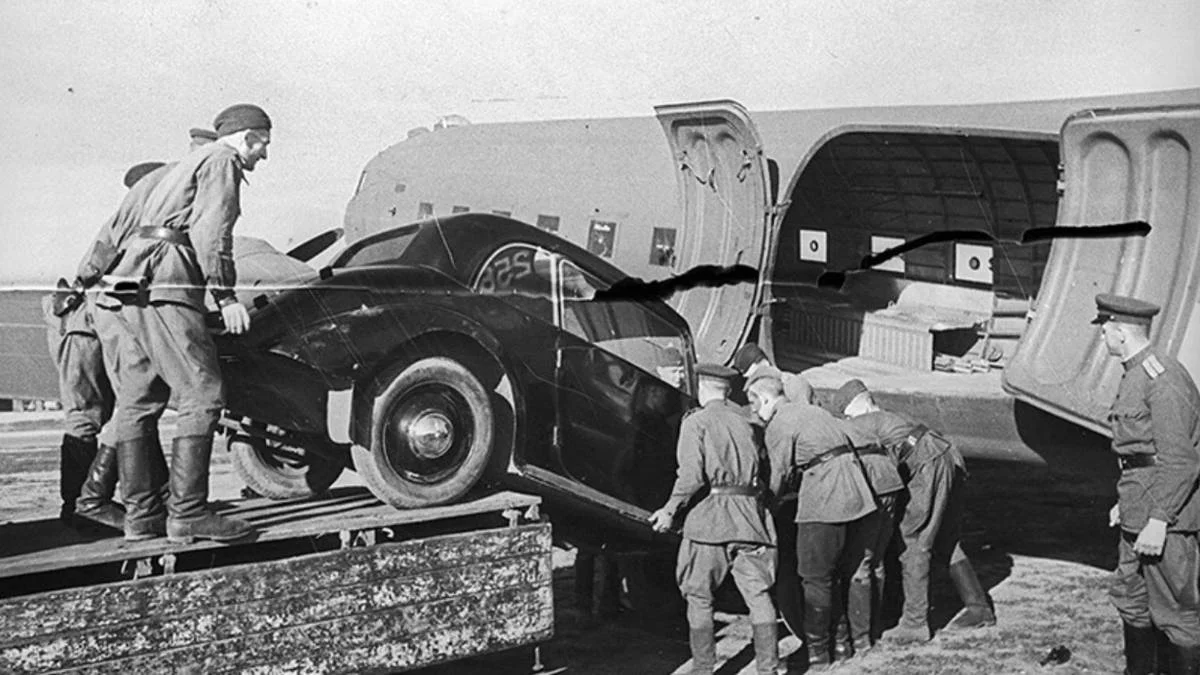
Red Army soldiers stealing an Opel car in Germany
Troy and Russian inheritance
The Soviet leadership tried to legalise looting. During the war, the Main Trophy Administration was established in the USSR.
According to the official data of this institution, 21,834 carloads of property, as well as 73,493 carloads of building materials and “apartment goods,” were taken from the Soviet zone of occupation of Germany: 60,000 grand pianos, 190,000 carpets, 460,000 radios, 265,000 clocks, 940,000 items of furniture, 1.2 million coats, 1 million hats, 20 million liters of alcohol.
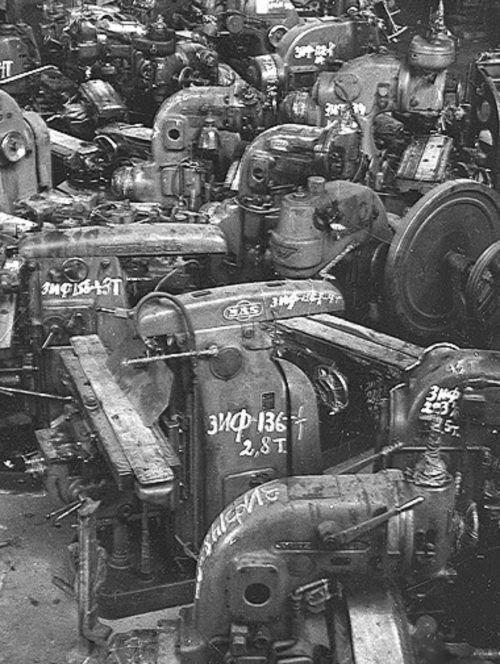
German machine tools prepared for shipment to the USSR
Russians also exported raw materials, machine tools, and industrial equipment from captured German factories. 100 tons of uranium exported from Germany accelerated the creation of the first industrial reactor in the USSR.
Gold, silver, and platinum amounted to 174,151 kilograms.
Art objects, historical relics, antiques from German museums and private collections became a separate category of “trophies”. Notably, the legendary Gold of Troy was taken by Russians from Germany.
The descendants of robbers
The modern Russian army is a direct descendant of the Soviet military. Its behaviour testifies not only to “traditions” but also to Russian poverty and “thug aesthetics” from the depressed regions of the Russian Federation.
This strong desire to loot can be traced to all the military conflicts involving the Russian Federation. In the 1990s, this was apparent in Chechnya. The Chechen wars were assumed to be an internal conflict. This enabled Russians to hide the biggest war crimes from the world.
In 2008, Russians resorted to looting in Georgia. Former Georgian parliament member Givi Targamadze recalled: “They behave like medieval hordes. They take away computer equipment — that’s okay. But household items, stools?! I do not know where they live. Probably, Russians have neither military bases nor normal houses. It looks like they are not paid money but are offered to live off the loot during such raids.”
Russians were also engaged in looting during the aggression against Ukraine in 2014. When they shot down the Malaysian Airlines plane in Donbas, shocking footage of the killers collecting valuables at the crash site of the Boeing 777 was circulated around the world.
The targeted policy of terror
Indeed, the same thing happened again during Russia’s full-scale invasion of Ukraine. In April, a few days after leaving Bucha, Irpin, Borodianka and other towns of the Kyiv region, Russians occupied the department of the Belarusian delivery service for several hours to send home hundreds of parcels with looted property. Many war criminals were identified thanks to the footage from a three-hour surveillance video.
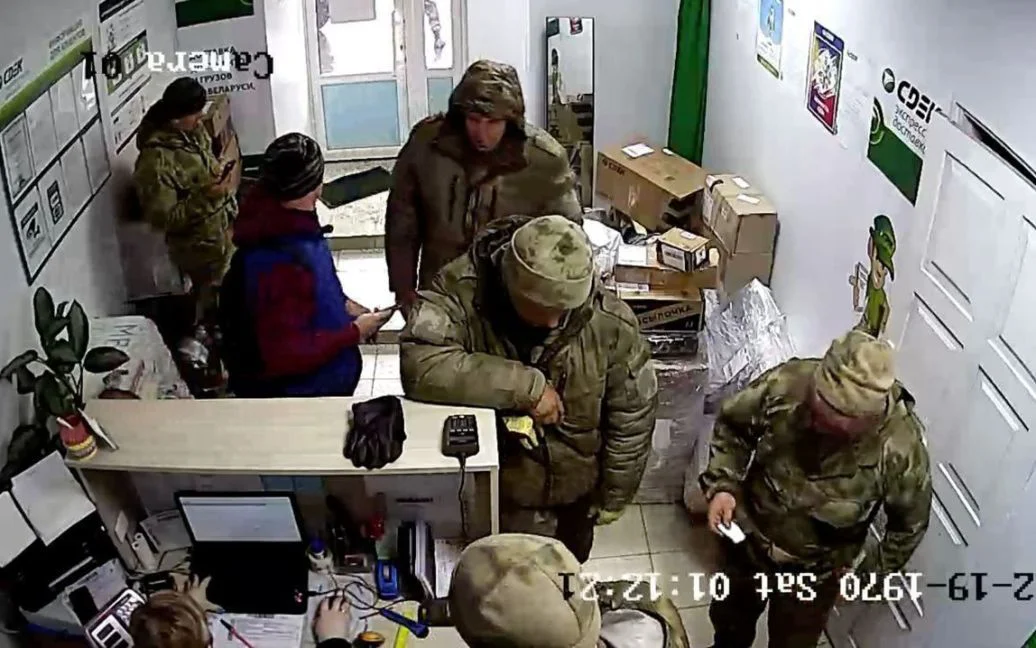
CCTV footage from a branch of a Belarusian delivery service showing Russian soldiers sending home looted property from Ukraine
On 12 March 2022, The Main Directorate of Intelligence of the Ministry of Defense of Ukraine reported: “The main task of the occupiers is to gain a foothold in the existing positions, hiding behind the local residents. At the same time, the units of Putin’s troops remain cut off from supplies for an indefinite period of time and have been instructed to switch to “self-sufficiency” until further orders. In fact, it presupposes taking everything necessary from the local residents as well as robbing warehouses, shops, and pharmacies. Therefore, the shots of looting, which in recent days have flown around the world, are not isolated… This is a targeted policy of terror of the occupying state encouraged by its top leadership.”
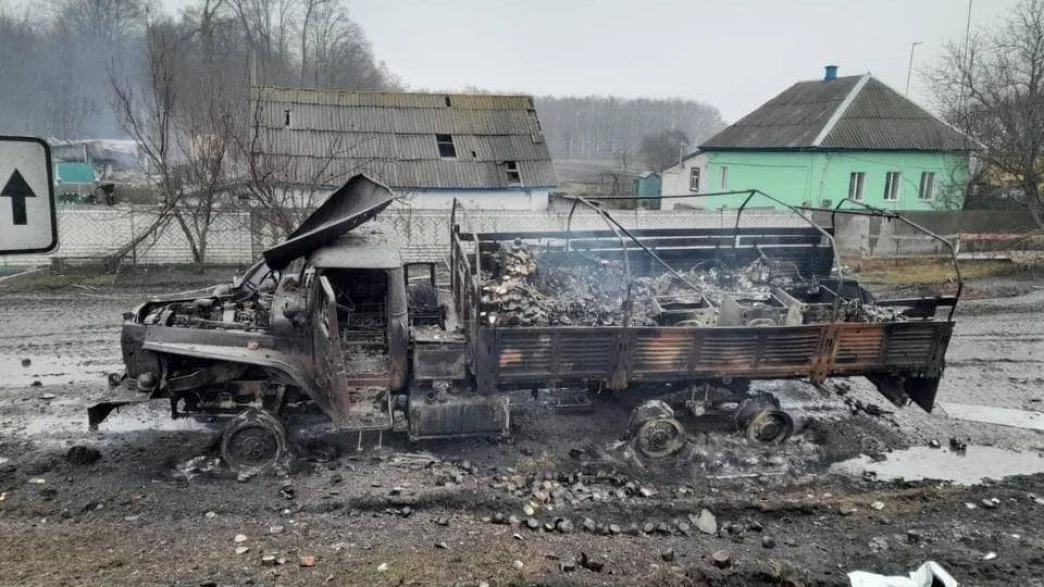
A Russian army truck burned in the Kyiv region, with the remains of several washing machines stolen by Russian soldiers in its body. The fact that the "trophies" were transported in an army vehicle indicates that the command allowed the use of military vehicles for this purpose
Russian soldiers have removed a hundred kilograms of property per person from Ukraine because they are guided by permissiveness and impunity. The fact that the Russian army command tolerates looting is proved by the fact that the army has permission to use military vehicles to transport washing machines, plasma TVs, and other looted property back to Russia.
Today, the Russian occupiers, with the permission of their government, loot museums, industrial enterprises, and warehouses. They load up grain grown on Ukrainian land and pick up metal goods. They are no better than their predecessors. Over the years, they stay the same.

